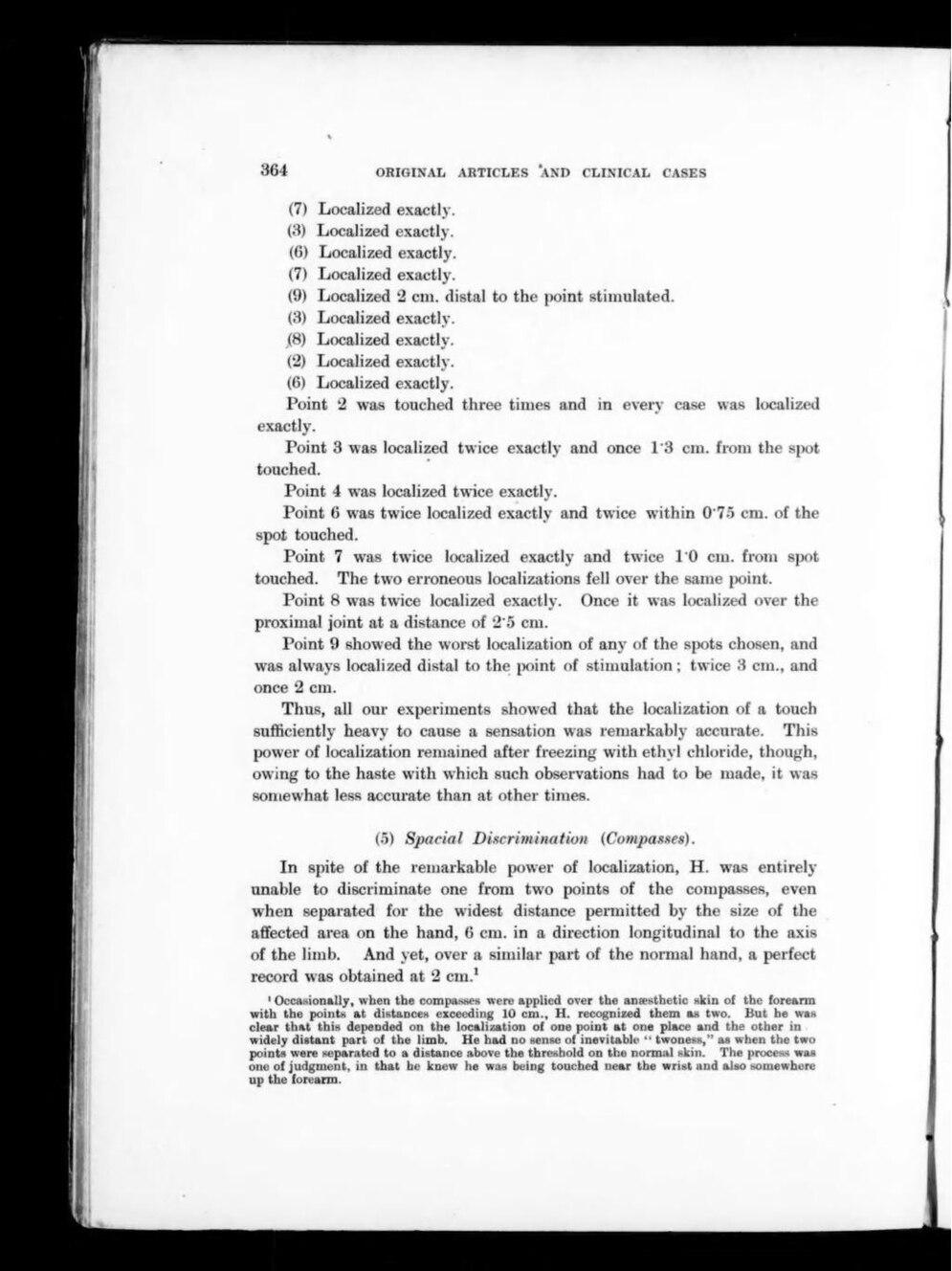(7) Localized exactly.
(3) Localized exactly.
(6) Localized exactly.
(7) Localized exactly.
(9) Localized 2 cm. distal to the point stimulated.
(3) Localized exactly.
(8) Localized exactly.
(2) Localized exactly.
(6) Localized exactly.
Point 2 was touched three times and in every case was localized exactly.
Point 3 was localized twice exactly and once 1·3 cm. from the spot touched.
Point 4 was localized twice exactly.
Point 6 was twice localized exactly and twice within 0·75 cm. of the spot touched.
Point 7 was twice localized exactly and twice 1·0 cm. from spot touched. The two erroneous localizations fell over the same point.
Point 8 was twice localized exactly. Once it was localized over the proximal joint at a distance of 2·5 cm.
Point 9 showed the worst localization of any of the spots chosen, and was always localized distal to the point of stimulation; twice 3 cm., and once 2 cm.
Thus, all our experiments showed that the localization of a touch sufficiently heavy to cause a sensation was remarkably accurate. This power of localization remained after freezing with ethyl chloride, though, owing to the haste with which such observations had to be made, it was somewhat less accurate than at other times.
(5) Spacial Discrimination (Compasses).
In spite of the remarkable power of localization, H. was entirely unable to discriminate one from two points of the compasses, even when separated for the widest distance permitted by the size of the affected area on the hand, 6 cm. in a direction longitudinal to the axis of the limb. And yet, over a similar part of the normal hand, a perfect record was obtained at 2 cm.[1]
- ↑ Occasionally, when the compasses were applied over the anesthetic skin of the forearm with the points at distances exceeding 10 cm., H. recognized them as two. But he was clear that this depended on the localization of one point at one place and the other in widely distant part of the limb. He had no sense of inevitable "twoness," as when the two points were separated to a distance above the threshold on the normal skin. The process was one of judgment, in that he knew he was being touched near the wrist and also somewhere up the forearm.
